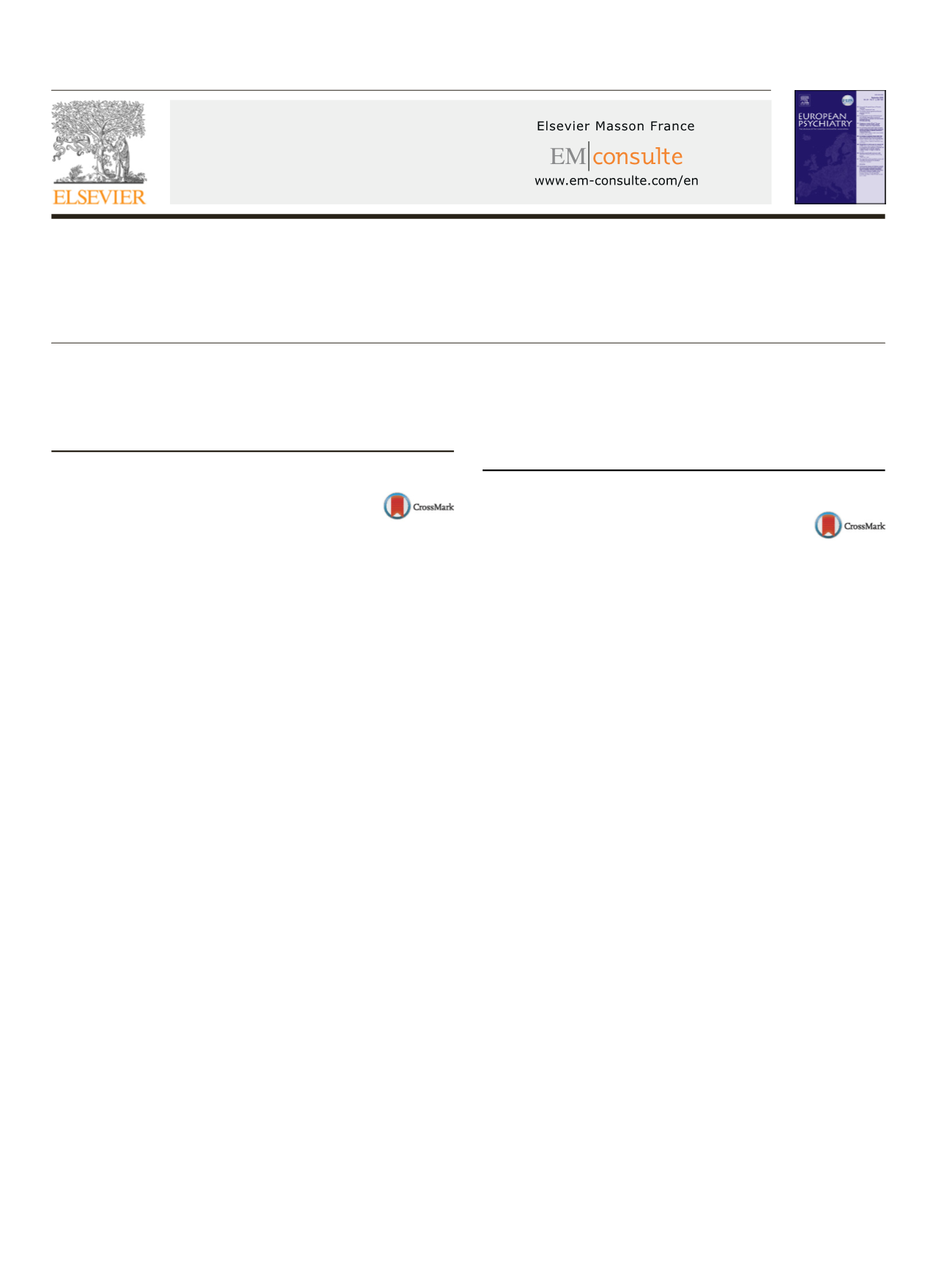
 European Psychiatry 41S (2017) S6–S7
European Psychiatry 41S (2017) S6–S7
Available online at
ScienceDirect
www.sciencedirect.com25th European Congress of Psychiatry
State of the art
State of the art: Working together for early
detection of psychosis
SOA001
Working together for early detection
of psychosis
A. Riecher-Rössler
University of Basel psychiatric hospital, CH-4051, Basel, Switzerland
Introduction
In the last decades psychiatry has taken an impor-
tant and overdue step which other medical disciplines had taken
much earlier, i.e. recognizing the chances of early detection and
intervention–first in the field of emerging psychosis, in the mean-
time also in other fields.
Objectives
To review new developments in the field of early
detection of psychosis and to critically discuss the obstacles still
depriving many of our patients of an immediate benefit.
Methods
Review and discussion.
Results
New developments are very promising. Identification of
individuals at risk and prediction of transition to psychosis is pos-
sible with an excellent accuracy, comparable to other preventive
approaches in medicine. And there is growing evidence how this
accuracy can even be more improved by using not only clinical
assessments but also additional domains such as neurocognition,
neurophysiology, or MRI, as well as newmethods for analyses such
as pattern recognition. Staged intervention according to the degree
of risk seems feasible.However, there are still many obstacles to a
broad implementation of this new know-how into clinical practice
such as lack of communication, political will and finances, or fears,
stigma and prejudices.
Conclusions
For the benefit of those concerned - patients and
their relatives - a great effort to work together is required from
all of us: clinicians, researchers from psychiatry and many other
fields, industry, politicians, and last, but not least, patients and their
relatives.
Disclosure of interest
The author has not supplied his declaration
of competing interest.
http://dx.doi.org/10.1016/j.eurpsy.2017.01.006State of the art: psychotherapies vs.
pharmacotherapies vs. combination therapies in
depressive and anxiety disorders
SOA002
Psychotherapies vs.
pharmacotherapies vs. combination
therapies in depressive and anxiety
disorders
P. Cuijpers
Faculty of Behavioural and Movement Sciences, Vrije Universiteit,
Amsterdam, The Netherlands
Both psychological and pharmacological therapies have been found
to be effective in the treatment of adult depression and anxi-
ety disorders. Psychological treatments include cognitive behavior
therapy, interpersonal therapy, behavioral activation, exposure
therapies, and several other types of therapy. Pharmacological
treatments include SSRIs, SNRIs TCAs, MAIOs and several other
types. In this presentation the results of meta-analyses of trials
directly comparing the effects of psychological and pharmalogical
treatments will be presented, as well asmeta-analyses of combined
treatments versus either psychotherapy alone or pharmacotherapy
alone. Results show that psychological and pharmacological treat-
ments are probably about equally effective at the short term, and
combined treatment is more effective than either psychotherapy
or pharmacotherapy alone. In the presentation several other issues
related to this group of trials will be discussed, like the influence
of conflicts of interest and the (lack of) blinding in psychotherapy
trials.
Disclosure of interest
The author has not supplied his declaration
of competing interest.
http://dx.doi.org/10.1016/j.eurpsy.2017.01.007 http://dx.doi.org/0924-9338/


















